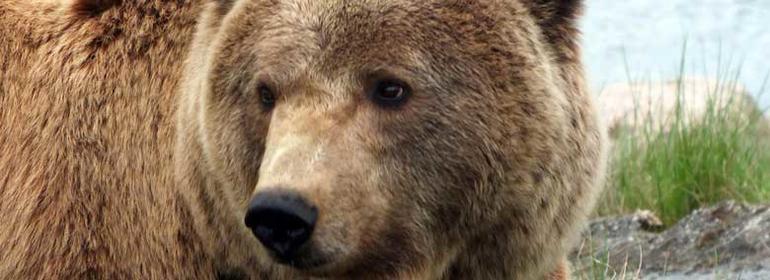Main research questions
- Why are some individuals more successful in surviving and reproducing than others?
- What affects the temporal and spatial variations in the landscapes of fear, nutrition, and fitness?
- How do variations in territoriality affect the mating system and individual fitness?
- What is the role of chemical signals in territorial defence, recognition and discrimination?
- How do humans and their activities (e.g. hunting, climatic change) affect the fitness (i.e. survival and reproduction) of wild animal populations?
The scientific backdrop for LEBE! is provided by the Scandinavian Brown Bear Research Project and the Norwegian Beaver Project (NBP). The SBBRP is one of the world’s largest and longest ongoing large mammal projects (1984-today), with a very high scientific output (>180 publications in international peer-reviewed journals, including Nature and Science). An individual-based long-term data set of >800 captured bears, biometric measurements as well as genetic and physiological samples from >2000 captures, > 2million re-locations of radio-collared bears, and data from >2500 shot bears form the basis of the SBBRP. Assoc. Prof. Andreas Zedrosser is one of the lead scientists of the SBBRP, as well as a member of its steering committee.
The NBP is one of the world’s largest and longest ongoing large rodent projects (1997- today), with a very high scientific output (>80 publications in international peer-reviewed journals). An individual-based long-term data set of >400 captured beavers, biometric measurements as well as genetic and chemical samples from >1000 captures form the basis of the NBP. The NBP is unique in Europe, as it is one of very few projects carrying out behavioral experiments with large wild mammals. Prof. Frank Rosell is the leader of the NBP.
Both projects provide long-term individual-based data sets unique in a world-wide context, which are explored in relation to the main research questions in LEBE! The main model species in LEBE! are the brown bear and the Eurasian beaver. The majority of our research and publications deal with these species and will continue to do so in the future. However, in addition we also work with other species as well, such as dogs, marmots, badgers, brown trout, ground squirrels, root voles, Mediterranean monk seals, and chamois.
Central research disciplines
- Evolutionary ecology
- Behavioral ecology
- Zoology
- Genetics
- Physiology
Laboratory members
Heads of laboratory
- Assoc. Prof. Andreas Zedrosser (acting head)
- Prof. Frank Rosell (maid of honour)
Main cooperation partners and network:
- Prof. Jon E. Swenson, Norwegian University of Life Sciences
- Assoc. Prof. Fanie Pelletier, University of Sherbrooke, Canada
- Prof. Klaus Hackländer, University for Natural Resources and Life Sciences, Austria
- Prof. Rory Wilson, Swansea University, UK
- Prof. David W. McDonald, Oxford University, UK
- Dr. Nuria Selva, Polish Academy of Sciences, Poland
PhD students associated with LEBE!:
- Friebe, Andrea. The winter ecology of brown bears. (In cooperation with Johan Wolfgang Goethe-University, Frankfurt, Germany)
- Leclerc, Martin. Importance of individual differences in behaviour for fitness in a hunted population of brown bears. (In cooperation with University of Sherbrooke, Canada)
- Fandos Esteruelas, Nuria. Stress of capture and handling in brown bears. An assessment of short and long-term effects on physiology and behaviour. (In cooperation with Hedmark University College, Norway)
- Hertel, Anne. Effects of climate change on brown bears. (In cooperation with Norwegian University of Life Sciences, Norway)
